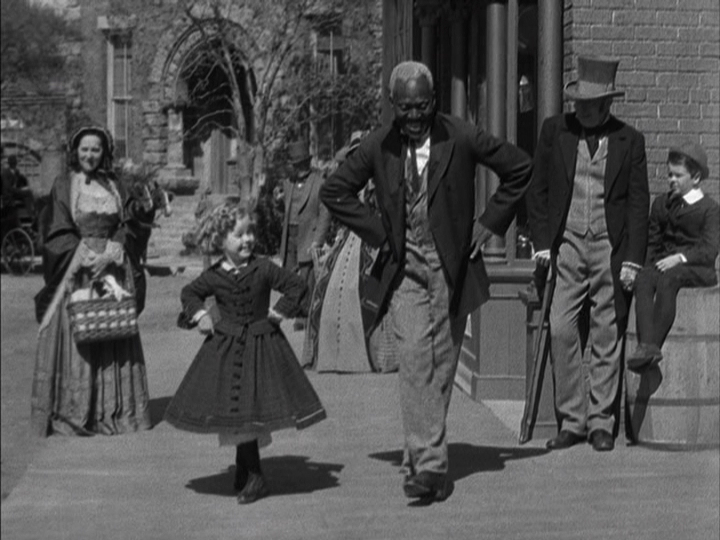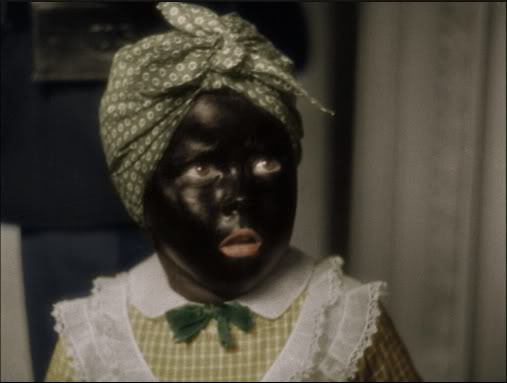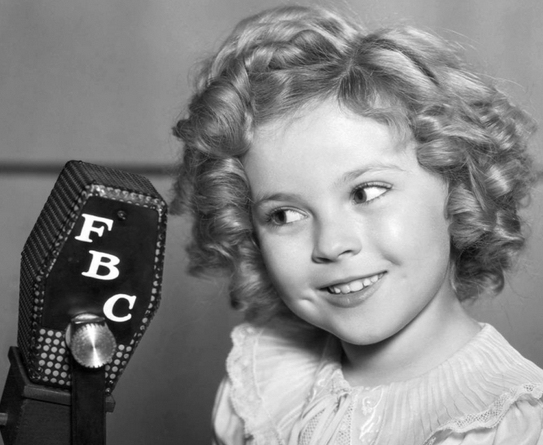The Greatest Generation said good-bye to one of their beloved actors today with the passing of Shirley Temple Black, beloved child actress renowned for her on-screen song and dance performances.
I never grew up with Shirley Temple movies, but we would be remiss to remember Ms. Temple’s legacy without remembering that she was also a star during the height of Hollywood’s love affair with Blackface. In fact, much of Ms. Temple’s fame was due to her status as America’s “lovable” and innocent child-next-door, all pudgy knees and dimples and curly hair; this juxtaposition was frequently played to extreme effect when she was contrasted against actors in Blackface and/or otherwise playing Black stereotypes.
In “The Littlest Rebel”, “The Little Colonel”, “Just Around the Corner” and “Rebecca of Sunnybrook Farm”, Ms. Temple plays the daughter of a slave-owning family. In these films, all the slaves are happy to sing and dance for their masters, frequently via the “unlikely” friendship between Ms. Temple’s character and that of her happy-to-be-there tapdancing butler (typically portrayed by Bill “Bojangles” Robinson). In “The Littlest Rebel”, Mr. Robinson’s character further posits that he neither wants, nor understands why others might want, Emancipation.


httpv://www.youtube.com/watch?v=AjCFYpWDmfM
In addition to her films with the tap-dancing Mr. Robinson, Ms. Temple also played opposite actors in Blackface, as she did in the 1936 film Dimples.

Ms. Temple even briefly donned Blackface herself in “The Littlest Rebel”.

Hollywood in the 1930’s is not entirely the same as it is today, although Blackface, Brownface, and Yellowface still occurs with alarming frequency. However, as we spend time today remembering Ms. Temple’s legacy for Hollywood, let us not forget that her legacy as a child star also includes some egregious reliance upon Blackface and Black stereotyping; a legacy that, to my knowledge, Ms. Temple never addressed later in life. In our efforts to eulogize Ms. Temple, let’s not White-wash over an nearly-forgotten era in American movie-making history.
So, today, we say good-bye to a beloved silver screen legend. And, with all respect to Ms. Temple’s life and her work, perhaps we can also start to put behind us the troubling racial dynamics of the Hollywood that popularized her.

